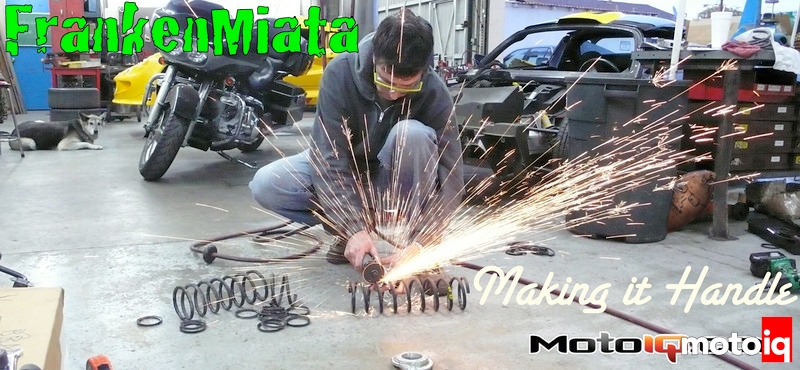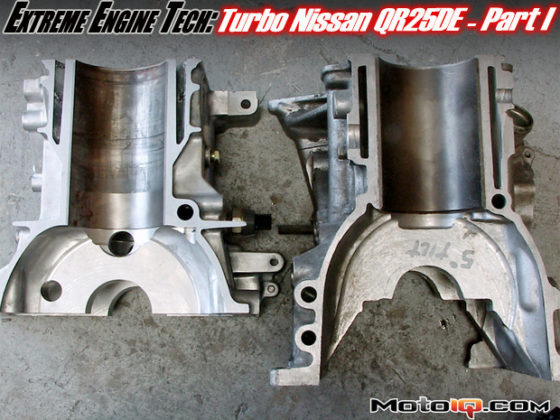,
Shocks
Since we built our car from a pile of scrap parts behind MD Automotive, our car didn’t really have any shocks. The pile, though, had lots of them. MD Automotive (and before that, Jackson Racing) works on a lot of Miatas, and occasionally, when customers drop off their cars to get fancy new shocks installed, they don’t actually want the crusty stock ones back. When that happens, they go in the pile.
 | ||
| Without the help of a shock dyno, we never would have known which shocks to use. |
Every one of those discarded stock shocks looks the same, but inside they all have different levels of wear and different valving (Mazda is constantly tweaking the Miata’s suspension tuning). We took the whole pile to the Muellerized shock dyno to sort them out, and the data from these tests showed us how to sort the shocks into matching pairs. We took the four stiffest ones and threw them on the car. Dead simple, if you have friends with shock dynos.
 | ||
| In the pile, there was no way to know which shocks went together. On Muellerized’s Roehrig shock dyno, they clearly sorted themselves into pairs. Considering their unknown age and condition, it was impressive that some of the shocks matched their mates so well you couldn’t even see two lines. Naturally, we decided to use the ones that made the red lines–the strongest of the bunch. |
Bump Stops
Bump stops are frequently overlooked as a suspension tuning tool, but on most cars, they’re hugely important. Miatas are hotorious for flopping over onto their bump stops in any hard corner. The fact that they still manage to handle well when doing this is rather impressive, but experience has shown that hitting a mid-corner bump while flopped over onto the bump stops is no better in a Miata than in anything else. That goes double when using tired old shocks and springs that are 50% stiffer than stock.
 | ||
| We dialed in the bump stops through trial and error. Luckily, foam stops can be trimmed with a sharp razor blade, so adjustments (in one direction only) are easy to make at the track. |
Most modern cars (NC Miatas included) now use urethane foam bump stops that are much softer and absorb much more energy than the hard rubber the NA and NB Miatas came with. The foam stops cushion the end of the suspension’s travel rather than snubbing it and catapulting the car back to ride height as the rubber stops tended to. Many modern cars use such long, soft foam bump stops that the car actually sits on the stops at ride height, using the foam as a self-damping progressive spring. Ford loves doing this, so you can find long foam stops under Ford Contours, Mercury Cougars, and the back of any Ford Focus. They’re also commonplace on Volkswagens. We grabbed a fistful of long, soft rear Mazda3 bump stops to try on the Frankenmiata.
In their full, long, squishy glory, Mazda3 bump stops are way too long, but by trimming either the top or bottom of the stop off, you can fabricate a variety of different bump stops with very different stiffness curves. You can also measure all these different spring rates if you spend some time on MD Automotive’s old valve spring tester. This lets you make cool-looking force/displacement curves when you add the spring and bump stop rates together. This doesn’t tell you what to do with these curves, though.
In the end, we simply took the car to the track and trimmed the stops until they felt right.
 | ||
| Initially, we thought we could make the Frankenmiata work with stock springs and long Mazda3 bump stops, using the stops as long, progressive helper springs. This raised the ride height too much, though, causing the inside lift off the ground when the suspension topped out in a corner. |



